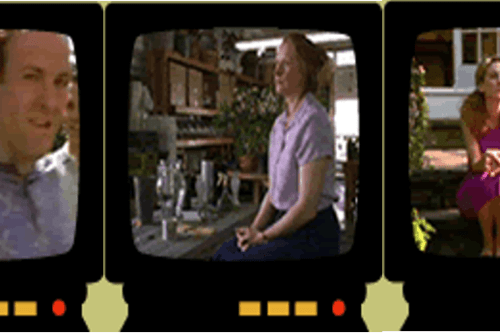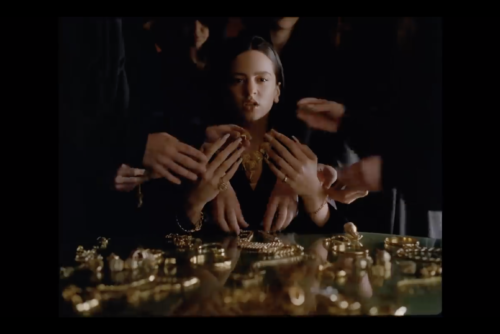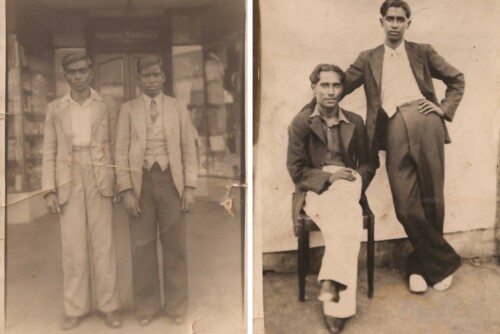A note on this essay. 1
The pilot episode of Sex and the City situates itself at the close of an epoch, proclaiming the “end of love.” This positioning is complicated in the last season as the finale depicts Miranda and Charlotte happily married, the 40-something Samantha in what is probably her first committed relationship, and Carrie reunited, yet again, with Big, her first-name-basis with “John” signifying a new relationship plateau and life stage. This happy coupling, in its replication of the romantic comedy ending, challenges the initial episode’s pronouncement that “Cupid has flown the co-op.” While the finale portrays then not a farewell to romantic love but a reinvestment in it, I wish to explore the pilot episode’s declared state of endings. As Carrie’s weekly column aspires to sexual anthropology, this essay attempts to present a field report on the series’ treatment of heterosexuality for the purposes of delineating a sociological moment in American culture and feminist media studies that we may term “late heterosexuality.”
Whereas Adrienne Rich’s thesis in “Compulsory Heterosexuality and Lesbian Existence” is that heterosexuality operates as a nonchoice for women, functioning as an institution through which patriarchy is manifested and maintained, late heterosexuality ushers in a new stage of straight relations—postcompulsory heterosexuality, in which women question romance and often remain single—and marries it to a new phase of capitalism, compulsory style, wherein men are discussed in terms of accessories and courtship in the idiom of business. Judgments about sexual orientation are frequently image appraisals rather than political issues. This phenomenon, I acknowledge, is largely native to Sex and the City‘s Manhattan locale; yet the series’ popularity and ability to generate op-ed journalism on style, courtship relations, and their nexus suggest that its representation, if not development, of late heterosexuality portrays a caricatured microcosm of new millennial social values and codes.
The series implies that, at least in Manhattan, being straight and having a Metrocard will get you on the bus: There is a ‘right’ but elusive heterosexuality, like securing the right Hamptons rental, the latter typically metonymical for the former. Owning a fabulous pair of Tiffany earrings earns Chivon a lay with Samantha; critics such as Susan Zieger have observed how that luxury accessory stands in for Chivon as the object of Samantha’s desire (“No Ifs, Ands, or Butts,” episode 35; Zieger 101–2). When Carrie discovers Aidan’s purchase of a decidedly not Upper East Side engagement ring and confesses to the group that the ring “wasn’t good,” Samantha summarily arbitrates with a “wrong ring, wrong guy” (“Just Say Yes,” episode 60). Charlotte terminates a relationship because of the suitor’s mismatched taste in china patterns. She weeds out a date not up to par in floral sensibility: he brings her carnations, mere “filler flowers.” Carrie, who actually likes pink carnations, toes a bottom line in the shoe department, confessing she’d “throw away” a guy if he dared to don “docksiders, topsiders, or any of the above” (“Hop, Skip, and a Week,” episode 80). Charlotte finds her knight in shining armor in Harry Goldenblatt—a short, bald man with a hirsute back, who does not quite appear to be a likely marital contender. Any doubts about his merit as a catch, however, are dissolved with his selection of Charlotte’s engagement ring, his 5.2 quality carats rendering Trey’s 2.16-carat Tiffany ring impotent. Yet the right ring does not a Sunday New York Times engagement announcement make: Harry needs to pose a certain way, with his fiancée seated beside him on a Burberry blanket in Central Park, in order for the couple to make the cut. 2 These testing standards are not confined to the straight characters: Gay male friends, valued members of Carrie and Charlotte’s urban family, are uniformly stylish and often professional stylists. We witness Stanford questioned and then commended in a gay underwear-only club on his brand selection. Conversely, lesbianism for Samantha is “just a label, like Gucci or Versace,” but Carrie, knowing that some labels are more equal than others, ends Samantha’s list with “Birkenstocks,” equating lesbianism with fashion that is too pragmatic, specifically, shoes merely made for walking. The show decenters heterosexual privilege by including the gay “option” while reducing legitimate sexuality (straight or gay) to a commodity available to the gym fit, powerful, or well-heeled. It is the stylishness of one’s execution of sexuality, not the sexuality one chooses, that matters in late heterosexuality. The implication that the right consumption supplants or competes with sexual-orientation choice is notable but hardly liberating, as late heterosexuality qualifies liberalism’s tenets of self-fashioning and choice by narrowing the spectrum of acceptable “looks.” 3
- Portions of this essay were originally presented at the Second Annual Cultural Studies Association Conference at Northeastern University on May 8, 2004.[↑]
- To note an analogous real-life case, Philadelphia wedding planner Mark Kingsdorf who runs the Queen of Hearts Wedding Consultants alleges to have found an increased market among men who want a romantic way to propose but need guidance and anxiety assuaged. The process usually begins with an hour-long interview for Kingsdorf, possessed with what he playfully dubs, an “all-around clear eye for the straight guy,” to learn about the client and his soon-to-be fiancé in order to proceed with proposal strategy and logistics (Melamed 116).[↑]
- Concurrent media phenomena such as reality TV and Internet matchmaking are evidence of the rising standards for straight attractiveness. Shows such as Extreme Makeover and The Swan employ full-fledged surgical methods, while Queer Eye for the Straight Guy‘s “Fab Five” act as image consultants commissioned to upgrade and polish self-volunteered subjects. Cyberdating agencies offer for a fee “professional” profile consultation to daters seeking to spruce up their online image. E-Cyrano.com, founded by Evan Marc Katz, a screenwriter and veteran online dater, will compose someone’s personal profile in his or her own voice after a lengthy interview (Egan 69).[↑]



